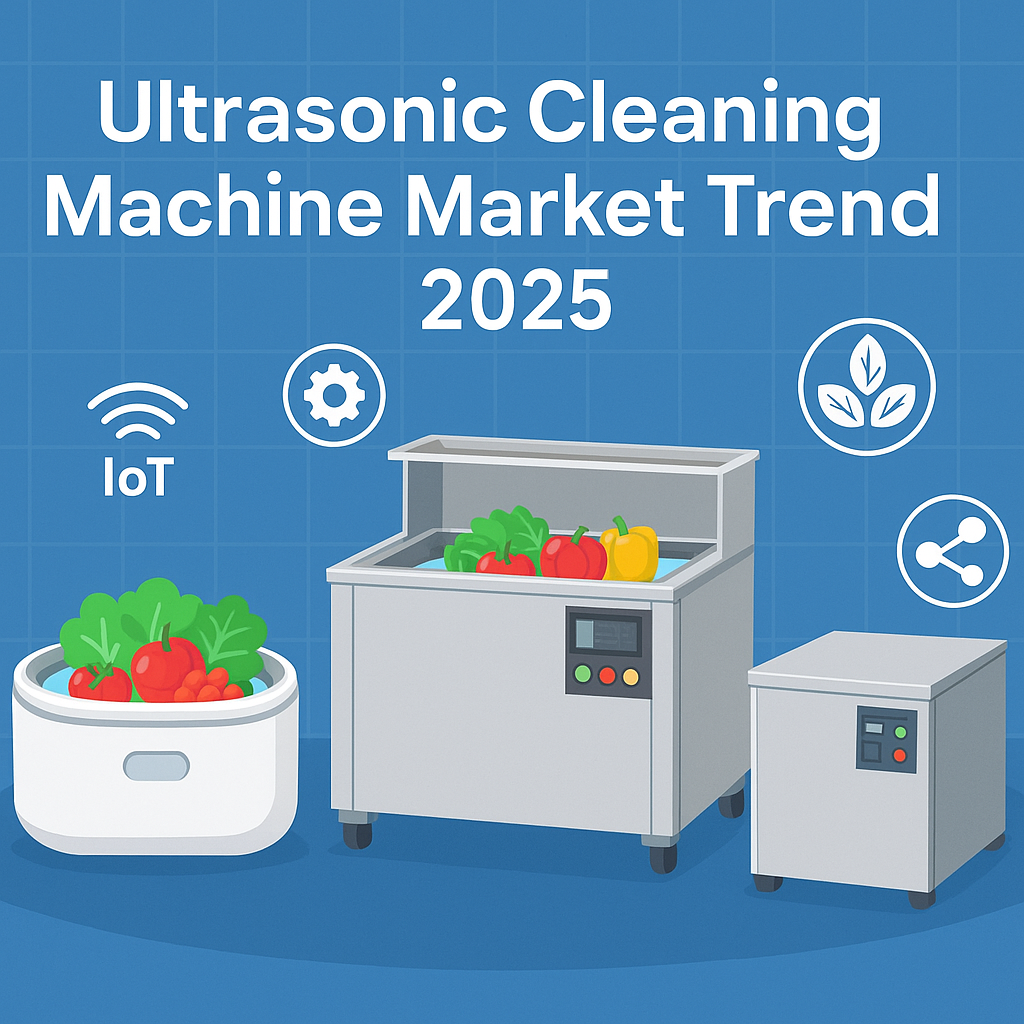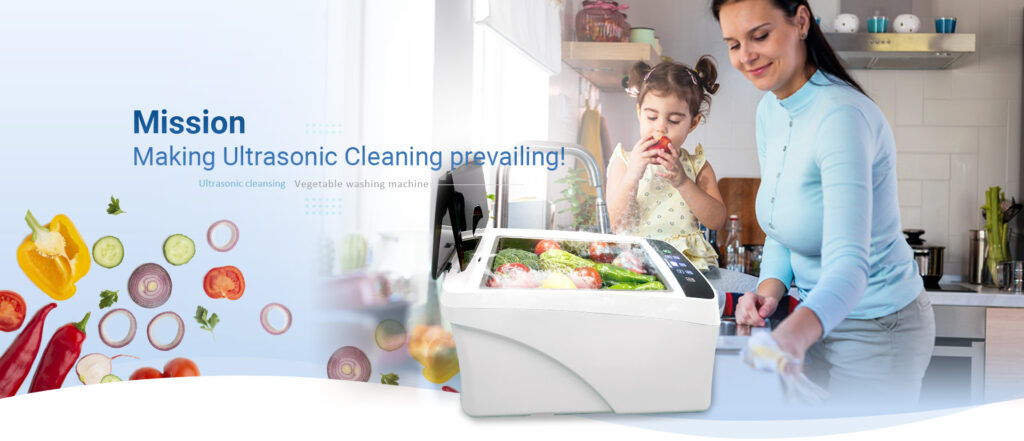Introduction
The ultrasonic cleaning machine market is experiencing significant growth and transformation as it moves into 2025. This report aims to provide an in-depth analysis of the market trends, focusing on the factors driving growth, technological advancements, and regional dynamics. The information is derived from a variety of reliable sources, ensuring a comprehensive understanding of the market landscape.

Market Overview
The global ultrasonic cleaning market has been on a steady growth trajectory, with its size estimated to reach USD 1.71 billion in 2025, up from USD 1.61 billion in 2024 (Straits Research). The market is projected to grow at a compound annual growth rate (CAGR) of 6.4% from 2025 to 2033, reaching USD 2.81 billion by 2033. This growth is attributed to the increasing demand for precision cleaning across various industries, including healthcare, automotive, and electronics.
Key Market Trends
1. Technological Advancements
The ultrasonic cleaning market is witnessing rapid technological advancements, particularly in the integration of Industry 4.0 technologies. Automation and smart technologies are enhancing the precision and scalability of cleaning processes. Ultrasonic cleaning machines are increasingly equipped with sensors, programmable logic controllers (PLCs), and automated material handling systems, allowing for the cleaning of large batches of components with minimal human intervention (Hong Ultrasonic).
2. Adoption of Eco-friendly Technologies
There is a growing emphasis on eco-friendly technologies within the ultrasonic cleaning market. Regulatory policies favoring environmentally sustainable solutions are driving the adoption of high-frequency ultrasonic solutions across various sectors, including hospitals, labs, and automotive manufacturing (GlobeNewswire).
3. Increased Demand for Precision Cleaning
The demand for ultra-precise cleaning is rising, particularly in industries dealing with delicate and complex parts. The non-abrasive nature of ultrasonic cleaning makes it valuable for sectors such as electronics, aerospace, medical devices, and automotive parts (Hong Ultrasonic).
4. Integration with Internet of Things (IoT)
The integration of ultrasonic cleaning systems with IoT technologies is enabling real-time monitoring and data-driven decision-making. Advanced sensors and IoT connectivity allow ultrasonic cleaning systems to continuously monitor and optimize cleaning processes (Hong Ultrasonic).
Regional Dynamics
North America
North America holds a significant share in the ultrasonic cleaning market due to the presence of established industries, technological advancements, and the increasing adoption of automation and robotics in manufacturing processes (MarkWide Research). The region is expected to maintain its dominance, driven by stringent regulations regarding environmental sustainability and cleanliness standards in healthcare and food industries.
Asia Pacific
The Asia Pacific region is witnessing rapid industrialization and economic growth, making it the fastest-growing market for ultrasonic cleaning systems. The increasing demand for precision cleaning in industries such as automotive and electronics is fueling market growth in this region (Mordor Intelligence).
Europe
Europe is a prominent market for ultrasonic cleaning systems, driven by stringent regulations and the presence of key market players. The region’s focus on environmental sustainability and strict cleanliness standards in healthcare and food industries are contributing to market growth (MarkWide Research).
Market Segmentation
The ultrasonic cleaning market is segmented by product type, capacity, end-user industry, and geography. Key product segments include benchtop ultrasonic cleaners, standalone ultrasonic cleaners, and multistage ultrasonic cleaners. The benchtop segment dominated the market in 2023, accounting for around 54% of total revenue, driven by its compact size, ease of use, and cost-effectiveness (GlobeNewswire).
Future Outlook
The ultrasonic cleaning market is poised for continued growth, driven by technological advancements, increasing demand for precision cleaning, and the adoption of eco-friendly technologies. The integration of Industry 4.0 technologies and IoT connectivity will further enhance the efficiency and scalability of ultrasonic cleaning systems. As industries continue to prioritize cleanliness and sustainability, the ultrasonic cleaning market is expected to play a crucial role in meeting these demands.
Conclusion
In conclusion, the ultrasonic cleaning machine market is set to experience robust growth in 2025 and beyond. The market’s expansion is fueled by technological innovations, regulatory support for eco-friendly solutions, and the increasing demand for precision cleaning across various industries. As the market evolves, stakeholders must stay abreast of emerging trends and advancements to capitalize on the opportunities presented by this dynamic industry.

Among the key players leading innovation in this dynamic market is LEO Ultrasonic Co., Ltd., a renowned ultrasonic cleaning machine manufacturer based in Taiwan. LEO Ultrasonic offers a full spectrum of ultrasonic cleaning solutions that cater to residential, commercial, and industrial needs. Their ultrasonic fruit and vegetable cleaner for home use is especially popular for its convenience and effectiveness in removing pesticides and contaminants. For larger-scale operations, the commercial ultrasonic fruit and vegetable washing machine LEO-V0900 provides powerful, efficient cleaning for supermarkets, restaurants, and food processors. Additionally, their wide range of industrial ultrasonic cleaning machines for heavy-duty applications supports industries requiring high-precision cleaning, such as electronics, automotive, and medical sectors. With a commitment to innovation and quality, LEO Ultrasonic continues to be a trusted partner for customers seeking advanced, eco-friendly, and efficient cleaning technologies.
